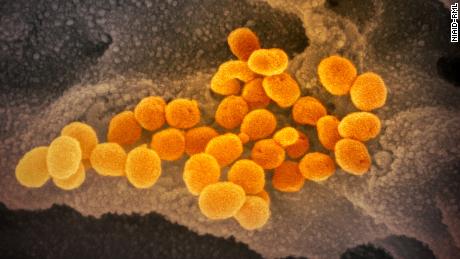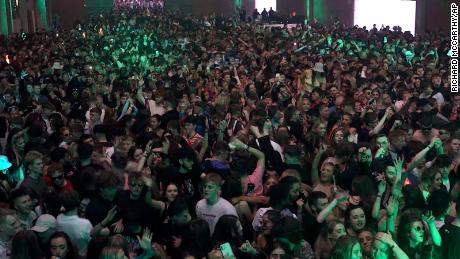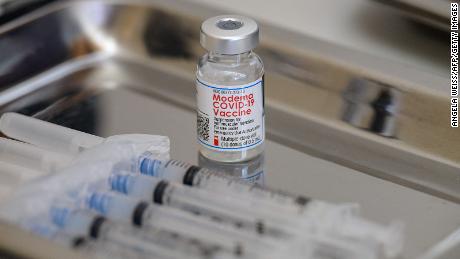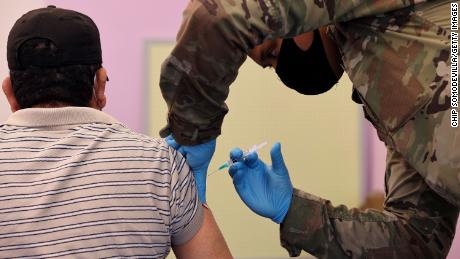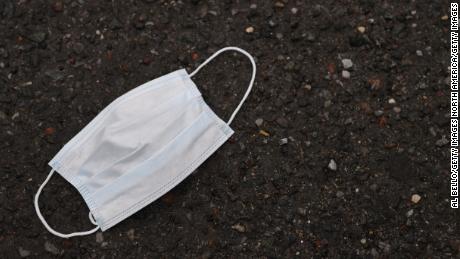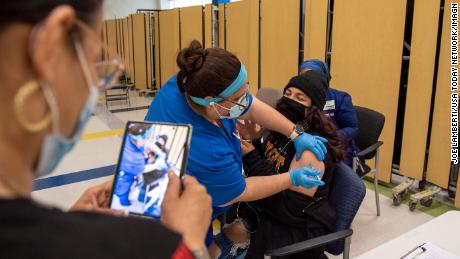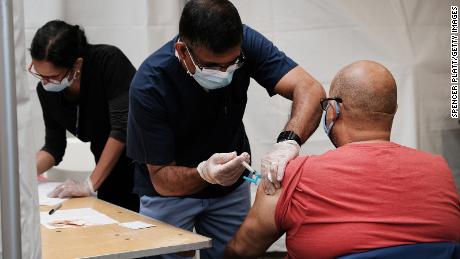Uncovering the origins of the virus that sparked a pandemic
Two competing theories have dominated the discussion since the early days of the pandemic, when the world was first made aware of the newly emergent, “novel” coronavirus. The first, and the one that was accepted as the likely story for a long time, is that the virus came from nature, jumping from its natural reservoir in some type of bat, through a still-unknown intermediary animal and into humans (possibly at or near a “wet market” in Wuhan, China), among whom it then spread like wildfire.
The second theory is that it leaked out of a lab in Wuhan, where there are, in fact, laboratories that study and manipulate coronaviruses very similar to SARS-CoV-2. Related to the lab-leak theory are two adjacent questions: If it was accidentally leaked, had it been genetically modified as part of legitimate scientific research? And, could the virus have accidentally leaked out without the Chinese government being aware of it, or was there a cover-up?
Weighing the evidence, tipping the scales
Putting aside the international and political backstories, which might be hard to do, where does the science and data leave us?
Dr. David Relman, a microbiologist and professor at Stanford University, weighed the evidence, noting that for both scenarios, natural and lab-leak, it’s “all” circumstantial. But, he said, finding the answer can help prevent the next pandemic.
“For the natural spillover hypothesis … first, nearly all previous outbreaks of emerging infectious agents have arisen through natural means … so there’s history,” he said.
“Second … all of [this virus’] nearest known relatives are bat coronaviruses, so we have to assume that at some point in the past, this virus was in a bat. We just haven’t found the bats that currently carry this virus, from which the original encounter may have taken place,” Relman continued.
He said the third piece of evidence is that all of the mechanisms that bring together man and bat — “the wildlife trade, the incredible movement of bats and other natural virus reservoirs from their natural habitats to places where people work and live and shop” — have been enhanced. “So we’re doing many things to increase the likelihood of these natural encounters,” he said.
And fourth, there is some environmental evidence that the virus has been found near markets in Wuhan. “The problem with that fourth form of evidence is it’s not clear that those telltale signs of virus arose after the outbreak began, or before,” he said.
In support of the lab-leak theory, Relman lists four items, too. “The place where all of the nearest coronaviruses are known to exist in nature is about 1,000 miles from the place where the first human cases arose,” he said, calling it a “big geographic gap.”
“Second, in the place where the disease started, we have some of the world’s largest collections of bat samples, and in particular, of bat samples containing these very bat coronaviruses — the nearest known relatives. They are in Wuhan, in a laboratory. So that’s fact number two,” he said.
Fact number three is that all laboratories have accidents. “To say that the Wuhan [Institute of Virology] never has had an accident, never could have an accident, is simply defying everything we know about human activities, about humans, and about laboratories,” he said.
There have been plenty of documented cases of lab leaks of potentially deadly pathogens, such as smallpox (1978 in the United Kingdom), SARS (2004 in China) and anthrax (2014 in the United States).
And the fourth consideration is what laboratories in Wuhan were working on. “They didn’t just have lots of samples of bat coronaviruses, they were working with them in ways that could have created additional risks … modifying their genomes and creating hybrid viruses. In essence, creating an artificial form of evolution. Do we know that some of these experiments gave rise to SARS-CoV-2? No. Could they have in theory? Yes,” Relman said.
Doing this kind of research on viruses is not unusual or a sign of bad intent, Relman said. “The very questions the Wuhan lab was addressing are the same questions that many scientists around the world have been addressing, which are critically important to understanding the nature of our relationship with these emerging viruses that might cause great harm. We need to study them,” he said, adding that while some experiments are worthwhile, others might be too risky — and that it’s important for the research community to have conversations to determine where that line is.
Relman notes that the Chinese have not acknowledged having worked on viruses that look like SARS-CoV-2. “This is where they claim that that’s not the case. So, I think we’re just left with some degree of uncertainty about what exactly their experiments were,” he said.
Obviously there has been no smoking gun to support or refute either theory, or the issue would be settled.
To confirm the natural spillover theory, Relman said solid, verifiable evidence is needed “of exactly where that first encounter took place. Who were the first patients? … If they took place at a market, or in some venue in Wuhan, we would have much greater understanding of exactly how the encounter may have taken place. We would have perhaps the source of the virus, the animal, for example, which we presumed that may have been,” he said.
It’s important to point out that this is exactly the kind of data and sampling which China has yet to provide.
To confirm the lab-leak theory, Relman said, what’s needed is “evidence that the encounter took place in a laboratory, perhaps during the course of an experiment where, perhaps, the virus was being cultivated and they didn’t realize that they had SARS CoV-2 … [or] evidence that a sample they never did sequence, but put into culture, in fact had SARS CoV-2, for example,” he said, adding that “there are thousands of samples” the lab hasn’t carefully sequenced yet.
In either case, determining how SARS-CoV-2 came to infect humans is very important.
“Mother Nature’s telling us what’s going to happen,” Dr. Peter Hotez, director of the Texas Children’s Hospital Center for Vaccine Development, said on NBC’s “Meet the Press” on May 30. “There’s going to be Covid-26 and Covid-32, unless we fully understand the origins of Covid-19, and this is absolutely critical and what’s needed.”
Hotez noted this pandemic is the third major coronavirus mass infection incident of the century, following the SARS and MERS epidemics.
Calls for a closer look
Little by little, there have been increasing calls to look more seriously into the possibility of the lab leak theory.
It was a stunning admission from someone who had had access to intelligence and raw data that many others didn’t.
Others, like Fauci, maintain it’s more likely than not that the virus emerged from a natural spillover event, but now acknowledge more investigation is needed.
“That’s the way it would be in a movie or some sort of a thriller or a comic book,” Dr. Robert Garry of Tulane University, told CNN. Garry, who studies viruses in the field and in the lab, helped write a study published in March of last year that showed the virus arose naturally. Garry and his co-authors also found no evidence that the virus was altered or manipulated.
“There’s just a lot of things about it that look perfectly natural,” Garry said.
The missing link
They may get their wish. WHO Chief Scientist Dr. Soumya Swaminathan said on CNN last week that the agency will continue its investigation into the virus’ origin beyond its first fact-finding mission.
“This was only phase one,” she said. “From the very beginning, everyone knew that you are not going to get to the origins in that limited period of time. So there’s a scope of work, of phase two and potentially future phases of work, that need to be done looking at all the options that were on the table.”
Finding the virus’ immediate ancestors would go a long way to shedding light on where the virus came from. “We can’t say that we have the immediate ancestors of this virus. We don’t. And that’s really the heart of the problem here. If we had the true parents — the direct, immediate ancestors of this virus — and we knew where they had first arisen, we would have the answer to where exactly this virus did its final evolution — in nature or in a laboratory,” Relman said.
According to WHO, another virus found in bats, known as RaTG13, is the closest we’ve come. That’s the virus that was found in bats living in a cave about 1,000 miles from Wuhan. RaTG13’s genome is 96% similar to that of SARS-CoV-2. But, while 96% sounds close, evolutionarily speaking, it is not.
“It’s not close enough to say it’s the exact virus that gave rise to this one, in a simple evolutionary step,” Relman said. “That kind of gap, 4%, means years — means decades — in terms of natural evolutionary time, and the natural speed of evolution.”
In fact, he said, if we were talking about 96% genome similar to humans, “we would be talking about a small, very simple life form that looks nothing like humans. So, 96% is actually quite a bit of distance.”
While science and detective work can help figure it out, history has shown it’s far from easy tracing a small strand of genetic material on a massive planet. It took 15 years of investigation in dense forests and dark caves to trace the first SARS outbreak to horseshoe bats. And despite the best efforts, it’s been 44 years since the first cases of Ebola, but as Fauci pointed out, “We haven’t yet nailed that down.”
Says Relman: “We need to all accept the possibility that we may never arrive at a definite answer about where the virus and the disease first arose.” But, he said after his letter, “My impression is that there’s a growing willingness to both look at this question in a dispassionate objective way, but also to accept that there truly are multiple possibilities here.”
![]()




